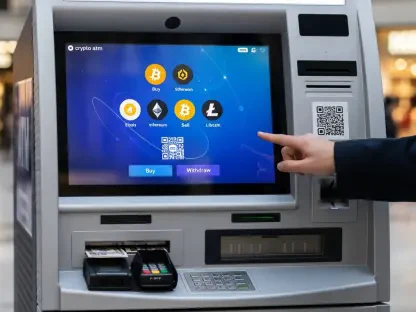In the fast-evolving world of retail technology, innovation often stumbles at the hurdle of scalability, leaving promising solutions stranded in pilot phases, while retailers globally grapple with fragmented systems that hinder the seamless integration of cutting-edge tools like AI and real-time analytics. This challenge sets the stage for a transformative solution that promises to bridge these gaps and redefine how retail operates at scale. Enter a groundbreaking architectural approach that serves as an operating system for modern retail, unifying data, enhancing decision-making, and ensuring secure expansion of new capabilities. This review dives deep into this technology, exploring its components, real-world impact, and potential to reshape the retail landscape.
Core Principles and Relevance
This framework emerges as a pivotal advancement in addressing the retail industry’s long-standing issues of siloed innovation and scaling obstacles. Designed as a composable platform, it integrates a unified data layer and AI-driven services to support automation and decision-making. Its core strength lies in creating a connected foundation where insights flow effortlessly across stores and the entire enterprise, replacing outdated, disjointed systems with a cohesive structure.
The significance of this technology cannot be overstated in a sector where shopper expectations demand seamless, trusted experiences. By enabling rapid experimentation and deployment of new tools, it ensures that retailers can innovate continuously without compromising operational stability. This approach tackles the critical need for real-time visibility and adaptability, positioning itself as a cornerstone for modern retail transformation.
Key Components of the Framework
Data Plane: Real-Time Operational Insights
At the heart of this technology is the data plane, a vital layer that provides a comprehensive view of retail operations, encompassing transactions, inventory, and customer behavior. Unlike traditional systems reliant on delayed, fragmented reports, this component delivers live insights, ensuring that data flows consistently across all touchpoints. Retailers benefit from immediate access to critical information, empowering them to make informed decisions on the fly.
This real-time capability transforms how stores and enterprises operate, eliminating the lag that often hampers responsiveness. Whether tracking stock levels or analyzing shopper trends, the data plane ensures that every technology experiment or strategic move is grounded in current, actionable intelligence. Its role as a unifying force sets the stage for innovation at an unprecedented scale.
Control Plane: Ensuring Governance and Security
Complementing the data plane is the control plane, which focuses on governance, security, and transparency across the retail ecosystem. This component is essential for managing the safe scaling of new features, ensuring compliance with regulatory standards, and maintaining visibility into system performance. It acts as a safeguard, balancing the drive for innovation with the need for stability.
By overseeing these critical aspects, the control plane mitigates risks associated with rapid technological expansion. Retailers can confidently roll out new capabilities knowing that security protocols and operational oversight are firmly in place. This structured approach to management is indispensable for maintaining trust and efficiency in a complex retail environment.
Edge-First and Cloud-Smart Integration
A defining feature of this framework is its edge-first, cloud-smart design, tailored to meet the unique demands of retail operations. Edge computing plays a crucial role in handling latency-sensitive tasks, such as real-time product recognition or risk-based checkout verification, directly at the store level. This ensures instant execution even in scenarios with limited network connectivity, preserving operational continuity.
Meanwhile, cloud solutions provide centralized management, scalability, and seamless integration with broader business systems. This synergy allows for efficient oversight of multiple locations and the flexibility to adapt resources as needed. The combination of edge and cloud capabilities optimizes performance, with AI models trained centrally and deployed locally to enhance on-site decision-making.
The balance between these two paradigms creates a dynamic system where local responsiveness and enterprise-wide coordination coexist. Retailers gain the ability to address immediate needs at the edge while leveraging the cloud for strategic, large-scale analytics like pricing optimization. This dual approach underscores the framework’s adaptability to diverse retail challenges.
Real-World Impact in Retail Settings
The practical applications of this technology in retail are both varied and impactful, demonstrating its value in addressing everyday operational challenges. From managing risks on the sales floor to optimizing labor through AI-powered agents, it delivers tangible benefits that enhance efficiency. Retailers have successfully utilized this system to ensure real-time checkout verification, minimizing errors and improving customer trust.
Beyond immediate store-level solutions, the framework excels in supporting enterprise-wide initiatives such as large-scale analytics for pricing strategies. Its ability to unify data across the chain enables retailers to identify trends and adjust offerings dynamically, meeting modern shopper demands for personalized, seamless experiences. These use cases highlight the technology’s role in bridging the gap between innovation and practical deployment.
The consistent delivery of reliable outcomes across diverse scenarios speaks to the framework’s robustness. Retailers adopting this system report improved operational resilience and customer satisfaction, as it aligns technology with evolving market expectations. Such real-world successes validate its potential as a transformative tool in the retail sector.
Challenges in Widespread Adoption
Despite its promise, adopting this framework presents notable challenges for retailers, particularly in transitioning from pilot projects to full-scale implementation. The shift often feels like a series of isolated efforts, lacking the momentum needed for comprehensive rollouts. Integrating with existing legacy systems poses a significant technical hurdle, requiring careful planning to avoid disruptions.
Stability during deployment remains another concern, as retailers must ensure uninterrupted operations while introducing new capabilities. To address these issues, strategies like composable services allow for incremental feature testing, reducing the risk of large-scale failures. Tester deployments, where old and new systems run concurrently, further support a phased approach to adoption.
Efforts to mitigate these limitations are ongoing, with a focus on structured scalability and AI-powered monitoring to streamline the process. By prioritizing high-impact use cases and maintaining controlled visibility, retailers can navigate the complexities of adoption more effectively. These measures aim to transform initial challenges into manageable steps toward broader implementation.
Future Trajectory and Innovations
Looking ahead, the framework holds immense potential to further revolutionize retail technology through enhanced capabilities. Advancements in AI are expected to accelerate development cycles, compressing timelines for new features from months to mere days. Improved system monitoring and predictive maintenance could also minimize disruptions, ensuring smoother operations across the board.
The long-term impact on retail is poised to be profound, reshaping customer experiences through hyper-personalized interactions and optimized processes. As the technology evolves, it may drive greater competitiveness by enabling retailers to adapt swiftly to market shifts. The focus on continuous innovation suggests a future where retail operations are more agile and data-driven than ever.
Exploration of new integrations and use cases will likely expand the framework’s influence, potentially extending beyond traditional retail into adjacent sectors. The emphasis on adaptability ensures that it remains relevant amid changing technological and consumer landscapes. Retailers investing in this system stand to gain a significant edge in an increasingly dynamic industry.
Final Reflections
Reflecting on the evaluation, this technology proves to be a robust solution for scaling innovation in retail, adeptly addressing fragmented systems and deployment challenges. Its unified data and control planes, combined with edge-first and cloud-smart dynamics, deliver measurable improvements in operational efficiency and customer engagement. The real-world applications showcase its ability to transform retail practices at multiple levels.
As a next step, retailers are encouraged to prioritize integration with existing infrastructure, focusing on high-impact areas to demonstrate value early on. Structured rollouts and composable services offer a practical path to mitigate adoption risks, ensuring stability. Looking forward, continued investment in AI enhancements and system monitoring promises to further solidify its transformative impact on the industry.









